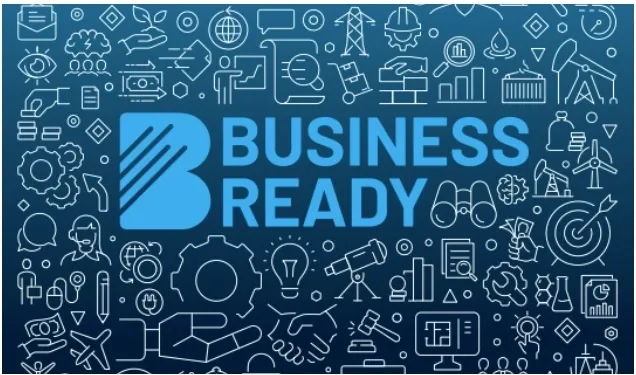Note: Endsight Consulting recently released its own Country Performance Index (CPI) that measures a country’s attractiveness to business and investment. Given our experience with indicators, we offer our assessment of the World Bank’s new methodology.
When the World Bank suspended its Doing Business Report in September 2021 under a cloud of shadiness, countries and businesses lost the most recognized and essential tool to compare business environments. On October 3, 2024, the World Bank released its long-awaited replacement.
Known as the Business Ready Report or B-READY, the new global reference is hugely important as a universal, comparative measure of business environments.
Is it any good? The short answer is a qualified yes.
Here’s why it’s fabulous.
- First, the World Bank team and its work are clearly the best in the world with arguably the most robust data and analysis. And they should be.
- The team took great pains to ensure the complete transparency and integrity of its data following the previous shenanigating that slayed the Doing Business Report.
- The report has massive detail across several key areas important for operating a business.
- The analysis includes both de jure (policies and laws on the books) and de facto (how policies and laws are practiced) evaluations of business conditions.
- The team was smart to have the first edition limited to just 50 countries and ramp up to 100 next year and a full slate of 180 countries in 2026.
Here’s why it’s “meh”:
- Kudos for depth, but it’s more complicated than it needs to be and will likely overwhelm most consumers. The arrangement and interplay of the three pillars and 10 topics and three cross-cutting issues lacks elegance and complicates efforts to identify strategic take-aways. World Bank chose to be exhaustive rather than representative in the data sets, which is fine but creates a lot of trees in the forest. Over 2,000 data points per country provides depth but makes for endless checklists for countries. The density and clunky roll-up make it hard for leaders to see trends, establish themes, or prioritize actions. Developing countries, in particular, who have limited bandwidth with fixes needed everywhere, are likely to struggle to figure out an effective sequential plan of action.
- The report structure tries to stifle the “who’s better” competition among countries – wrongly in my opinion. Sure, an overall ranking list doesn’t say much technically, but the blunt ranking published by the old Doing Business sparked intense motivation for countries to improve. This was the report’s greatest contribution for garnering attention and producing outcomes. Don’t blame countries for wanting to climb the ladder that the world’s largest financial institution puts in front of them. Reforming for points is still reform and can move the needle. Incentivized gamesmanship by countries doesn’t have to bad and can produce real results – that is, if WB staff are not on the take and performance metrics are smartly structured.
- B-READY goes deep but is not comprehensive; it is missing numerous considerations. This is largely by design and mirrors the limitation of the previous Doing Business. Key absences include: political risk, corruption, human capital, economic complexity, GDP growth, market size, rule of law, and other issues – which are valuable considerations for businesses and investors. The new report intentionally focuses on the tactical requirements of operating a business in a country, but it is incomplete for deciding whether to enter a market in the first place.
Why it’s so important.
- Even if mostly limited to business operations, B-READY is a credible global benchmark to measure and push reforms that can help economies and reduce poverty. Donor aid is an important band-aid, but private-sector led economic growth is the strategic elixir to achieve transformational and sustainable results. Only the stature and technical skill of the World Bank can produce such a foundational global standard.
- While World Bank (unfortunately) sanded down the sharp edges of blunt rankings to avoid avoidable foul-play, the report will still likely spur earnest countries to organize themselves to improve. Perhaps I should embrace the increased complexity of the methodology because countries will likely need overpaid consultants like me to help them sort through the reams of data. So thanks, I guess.
A few of suggestions:
- Bring back the competitive juices to incentivize government actions to move the ball on these indicators. For example, hold an annual awards (at WB Fall Meetings) to recognize top scores, fastest reformers, best in income category, mentor countries, etc. – emphasizing low and lower-middle income countries.
- Re-introduce overall rankings but categorize the list into six groups of 30 countries each (when the report reaches 180 countries) so countries can strive to graduate to the next level rather than try to squeeze points to slide-up a place or two. The difference between #34 and #38 is negligible and meaningless, but the difference between, say, #85 and #34 is instructional and illustrative.
- B-READY should include trend lines for each country to show if they are improving or declining. Identifying the movement and direction of a country is as important as a static snapshot of their most recent scores. Endsight’s CPI, for example, compares each country’s current score with an average of its previous three years to show upward or downward movement.
- Since all indicators are not created equal, B-READY should develop an easy-to-read analysis of which indicators and associated reforms are the most important to tackle first and will have the biggest impact on business conditions. Assuming a government has the necessary political will to take real actions, the analysis may include the “degree of difficulty” to improve an indicator (hard, moderate, easy) and/or how long such a reform typically takes (<1 month, about 6 months, > 12 months). A simple indication for the heaviness of the lift helps reformers assemble effective action plans.
See Endsight Consulting’s Country Performance Index at:





